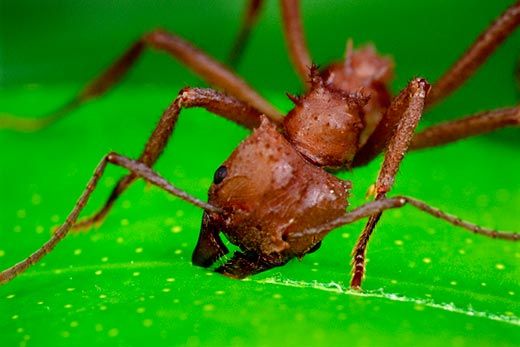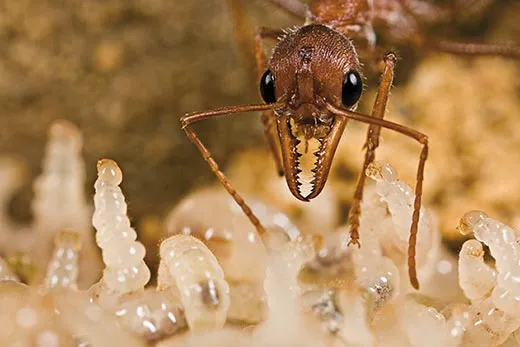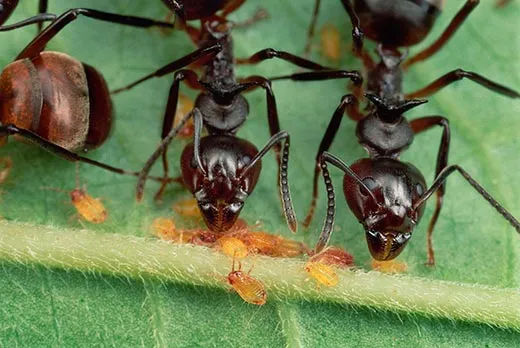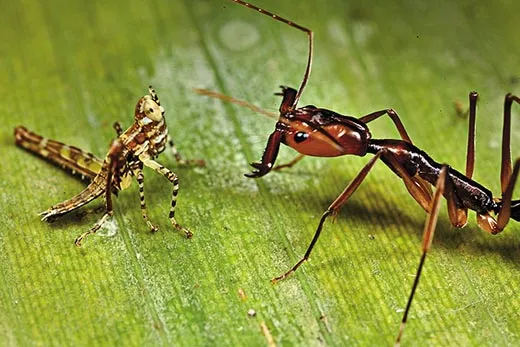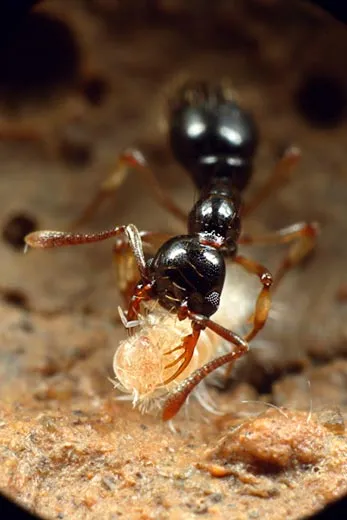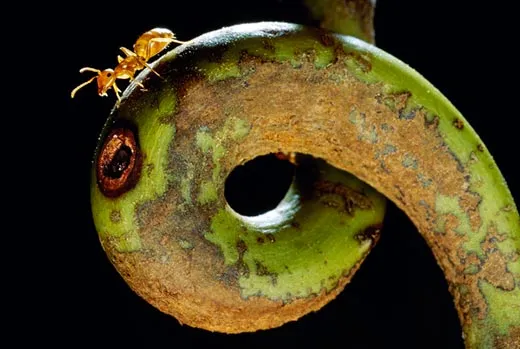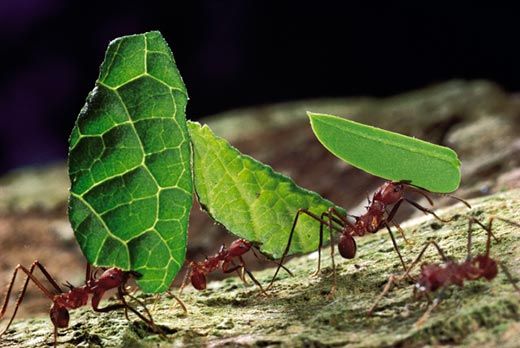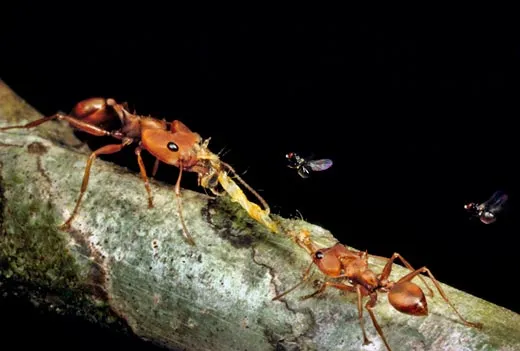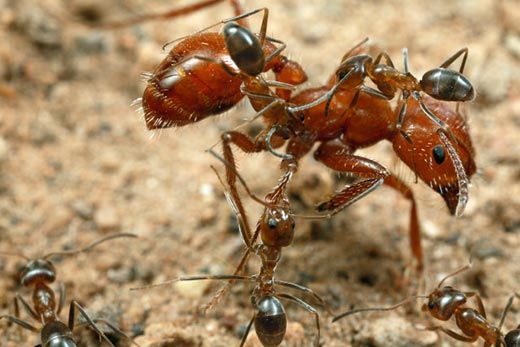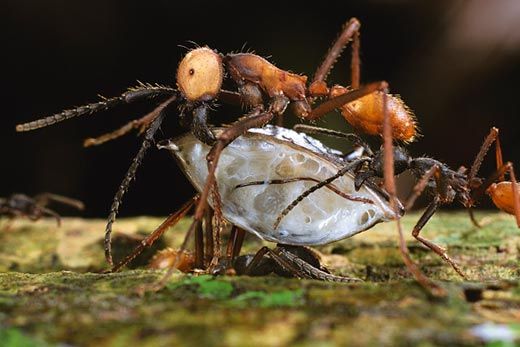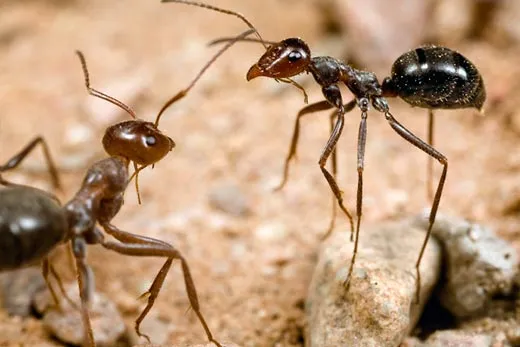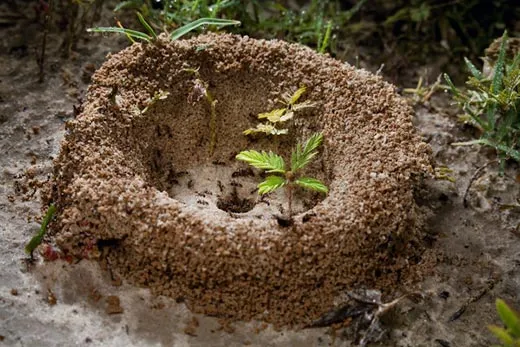The Hidden World of Ants
A new photo exhibit featuring the work of biologist Mark Moffett reminds us that we still live in an age of discovery
/https://tf-cmsv2-smithsonianmag-media.s3.amazonaws.com/filer/Australian-bull-dog-ant-631.jpg)
"The African ones have jaws like knives; they'll eat babies." The listener squirms. Next image. A grime-covered hunter is attacking its prey. "This one, you can just lean back in your chair with a beer to watch."
Mark Moffett, 51, tilts his head when he speaks. The biologist is accustomed to the angle; he spends a lot of time on the ground, photographing the minutiae of nature, especially ant life, in vivid, almost glamorous detail—a skill he acquired largely by reading a how-to book on fashion photography when he was a 24-year-old grad student.
"Turned out I was pretty good at it," he says—an understatement, given that he's won several prestigious photojournalism awards. Dressed in rumpled attire, he is sprawled in a leather armchair with a laptop computer at the Explorers Club on New York City's Upper East Side. (Previous club members have included explorers Robert Peary and Sir Edmund Hillary.) Moffett glances around at the strange assortment of trophy tusks and dusty stuffed beasts. "This is the sort of place you'd expect to find a lot of old men smoking pipes," he says.
Still, if the décor doesn't suit Moffett, the club's adventurous spirit certainly does. "I'm kind of an ant elitist," he says. "I like to travel to find the best ants, which are mostly in the tropics." In pursuit of that and other goals relating to the study of exotic life, he has spent the past 30 years conducting research and photographing specimens on six continents, where he's survived close encounters with stampeding elephants and climbed some of the world's tallest trees to study forest canopies.
But it's the ants, not the close calls or tall tales, that seem to provoke the most excitement among Moffett's colleagues in the scientific community. "We tend to think of the 19th century as the end of the great age of discovery," says Smithsonian entomologist Ted Schultz. "But the age of discovery continues unabated when it comes to insect species." Schultz coordinated a new exhibition featuring Moffett's photographs at the National Museum of Natural History, "Farmers, Warriors, Builders: The Hidden Life of Ants," which runs through October 10.
Not bad for a high-school dropout from Salida, Colorado, and later, Beloit, Wisconsin. Moffett spent his teen years hanging out with science professors at Beloit College, who made an exception for his lack of a diploma and allowed him to earn his undergraduate degree. (Last year his high school awarded him an honorary diploma.) He got his doctorate studying Asian ants at Harvard, where he found a mentor in the eminent evolutionary biologist (and ant expert) Edward O. Wilson. He also worked there briefly as a curator of ants—perhaps the only thing on Moffett's lengthy résumé that could be considered an actual job. "I'm not very good at this reality thing," he says. "But you don't have to sit in a lab with a white coat clicking away at a machine all day to be a biologist."
Sometimes, apparently, you don't need to wear clothes at all. Moffett's Web site, DoctorBugs.com, includes photographs and a video of his 2008 marriage to Melissa Wells atop an Easter Island volcano, for which the couple wore little more than paint and feathers. And he doesn't shy away from childish stunts, such as spooking television talk-show host Conan O'Brien with a large spider.
But Moffett is unapologetic. "Scientists should be better storytellers, and humor is a big part of that," he says. "If you can get people to understand and relate to one spider, for example, then they will understand spiders generally, and get excited about saving them."
His mentor would likely agree. E. O. Wilson calls Moffett "a rare born naturalist" and says he "knew he was something special" from the start. But Wilson declines to revel in his former student's success. "Mark is Mark," Wilson reflects. "He just developed on his own."
